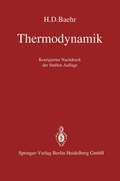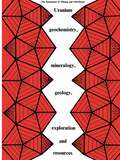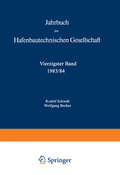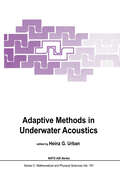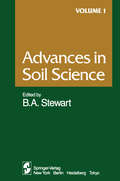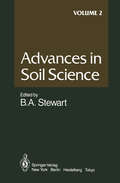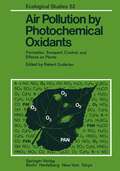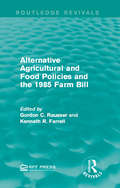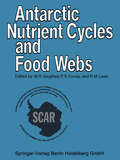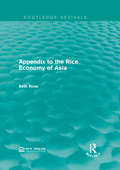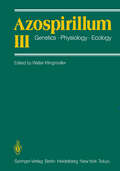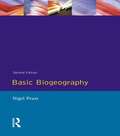- Table View
- List View
Thermodynamik: Eine Einführung in die Grundlagen und ihre technischen Anwendungen
by H. D. BaehrVI wendungen verknüpft. Der Student erwirbt dabei zwar eine gewisse Fertigkeit im Umgang mit Formeln für technische Sonderfälle; ihm fehlt aber oft ein tieferes Verständnis für die logischen Zusammenhänge, und er versteht häufig nicht, Grundlegendes und Allgemeingültiges von dem zu unterscheiden, was nur unter einschränkenden Voraus setzungen für einen besonderen Anwendungsfall gilt. Ich habe mich daher bemüht, die Grundlagen dcr Thermodynamik ausführlich, in hinreichender logischer Strenge und so allgemein wie nötig darzustellen. Auch der größte Teil der Umarbeitungen, Ergänzungen und Erweite rungen diente der klareren Darstellung grundlegender Zusammen hänge. Stofflichen Erweiterungen wurden Kürzungen entgegengestellt, und manchmal brachte die Umarbeitung auch eine Straffung des Textes mit sich, so daß der Umfang des Buches gegenüber der zweiten Auf lage etwas verringert werden konnte. Von den zahlreichen Änderungen möchte ich die folgenden nennen. Der Arbeitsbegriff fand in Kapitel 2 eine genauere und eingehendere Darstellung, insbesondere wurde auch die Arbeit am Element eines strömenden Fluids behandelt, für das auch die besondere Form des 1. Hauptsatzes angegeben wird. Die in den früheren Auflagen gebrachte Einführung der Entropie (Kapitel 3) habe ich verallgemeinert und mit ausführlichen Beweisen versehen, um die Ergebnisse neuerer axiomati scher Untersuchungen, Stellung und Bedeutung von Caratheodorys Unerreichbarkeitsaxiom betreffend, zu berücksichtigen. Die früher nur kurz erwähnten Begriffe Entropieströmung und Entropieerzeugung habe ich ausführlich und auch in ihrer Anwendung auf technische Probleme dargestellt, wobei die mit der Entropieerzeugungeng verknüpfte Dissi pationsenergie neu eingeführt wurde.
Transmission Electron Microscopy: Physics of Image Formation and Microanalysis (Springer Series in Optical Sciences #36)
by Ludwig ReimerThe aim of this book is to outline the physics of image formation, electron specimen interactions and image interpretation in transmission electron mic roscopy. The book evolved from lectures delivered at the University of Munster and is a revised version of the first part of my earlier book Elek tronenmikroskopische Untersuchungs- und Priiparationsmethoden, omitting the part which describes specimen-preparation methods. In the introductory chapter, the different types of electron microscope are compared, the various electron-specimen interactions and their applications are summarized and the most important aspects of high-resolution, analytical and high-voltage electron microscopy are discussed. The optics of electron lenses is discussed in Chapter 2 in order to bring out electron-lens properties that are important for an understanding of the function of an electron microscope. In Chapter 3, the wave optics of elec trons and the phase shifts by electrostatic and magnetic fields are introduced; Fresnel electron diffraction is treated using Huygens' principle. The recogni tion that the Fraunhofer-diffraction pattern is the Fourier transform of the wave amplitude behind a specimen is important because the influence of the imaging process on the contrast transfer of spatial frequencies can be described by introducing phase shifts and envelopes in the Fourier plane. In Chapter 4, the elements of an electron-optical column are described: the electron gun, the condenser and the imaging system. A thorough understanding of electron-specimen interactions is essential to explain image contrast.
United States Arctic Interests: The 1980s and 1990s
by William E. Westermeyer and Kurt M. ShusterichElliot L. Richardson The United States is finally awakening to the fact that it has a major stake in the future of the Arctic. Recognition of the national importance of the Arctic has been slow in coming despite the resource wealth that Arctic Alaska has thus far yielded. Although the United States has had strategic interests in the Arctic since World War II and active oil and gas interests there since the discovery of oil at Prudhoe Bay in 1968, its interest in the Arctic has been low in comparison with that of its Arctic neighbors, Canada and the Soviet Union. What has been described by some as an attitude of neglect toward the Arctic is now changing. The notion of change has become central in most current discussions about the future of the Arctic. It is apparent that the Arctic region is entering a period of greatly accelerated economic, social, strategic, and is political change. The driving force behind the changes taking place resource development activity, and although the present scale of this activity is not inconsequential, it is small in comparison to its projected growth in the next two decades. In short, the Arctic is about to come alive. However, knowledge of the Arctic and experience in the Arctic is comparatively limited. Moreover, competing interests and differing val ues exist among national groups and between countries in the Arctic, just as they do in the lower latitudes.
Uranium geochemistry, mineralogy, geology, exploration and resources: Published for the Institution of Mining and Metallurgy
by B. De Vivoturning points that, in the course of a few years, have made this The uranium minerals that today are at the centre of worldwide metal an essential raw material. attention were unknown until 1780, when Wagsfort found a First, the destructive property of fission reactions made uranium a metal of fundamental strategic importance, increas pitchblende sample in 10hanngeorgenstadt. This discovery passed unnoticed, however, since Wags fort thought that it ing research in some nations, but the revolution came with the plan for the real possibility of utilizing chain reactions for contained a black species of a zinc mineral-hence the n':lme 'pitchblende' (= pitch-like blende). Seven years later, Klaproth, energy production in place of conventional fuels. while examining the mineral, noted that it contained an oxide Since that time a 'uranium race' has been in progress in many countries-often justified by the well-founded hope of of an unknown metal, which he called 'uranium' in honour of the planet Uranus, recently discovered by Herschel. Klaproth becoming self-sufficient with regard to energy, or at least of also believed that he had separated the metal, but, in fact, the paying off a part of the financial deficit due to increasing fuel imports.
Variational Inequalities and Flow in Porous Media (Applied Mathematical Sciences #52)
by M. ChipotThese notes are the contents of a one semester graduate course which taught at Brown University during the academic year 1981-1982. They are mainly concerned with regularity theory for obstacle problems, and with the dam problem, which, in the rectangular case, is one of the most in teresting applications of Variational Inequalities with an obstacle. Very little background is needed to read these notes. The main re sults of functional analysis which are used here are recalled in the text. The goal of the two first chapters is to introduce the notion of Varia tional Inequality and give some applications from physical mathematics. The third chapter is concerned with a regularity theory for the obstacle problems. These problems have now invaded a large domain of applied mathematics including optimal control theory and mechanics, and a collec tion of regularity results available seems to be timely. Roughly speaking, for elliptic variational inequalities of second order we prove that the solution has as much regularity as the obstacle(s). We combine here the theory for one or two obstacles in a unified way, and one of our hopes is that the reader will enjoy the wide diversity of techniques used in this approach. The fourth chapter is concerned with the dam problem. This problem has been intensively studied during the past decade (see the books of Baiocchi-Capelo and Kinderlehrer-Stampacchia in the references). The relationship with Variational Inequalities has already been quoted above.
Vorlesungen über Massivbau: Teil 1: Grundlagen zur Bemessung im Stahlbetonbau
by Fritz Leonhardt Eduard MönnigThe Wave-Particle Dualism: A Tribute to Louis de Broglie on his 90th Birthday (Fundamental Theories of Physics #3)
by S. Diner D. Fargue G. Lochak F. SelleriThe Weather Factor
by David LudlumIn this book, David Ludlum, America's acknowledged dean of weather history, describes historical weather events and their consequences to society. From the colonists' first encounter with the American climate to the launch of the first weather satellite in space, weather has influenced battles, wars, elections, sports events, balloon launches, airship flights, and many other history-making events. Want to know what part the weather played in ending the Siege in Yorktown? Why President Harrison caught his fatal cold on Inauguration Day? Which was the worst-ever Saturday for football all across the country? This book attempts to answer these questions and many more.
The Well-Chosen Garden
by Christopher LloydThe perfect book on how to make your garden the best it can be.'Essential reading' Country Life'Funny, encouraging, informative' Sunday TimesWould your garden, small or large, in town or country, win a prize? Is there room for improvement? Everybody has favourite plants, but the ability to put them all together to ensure a splendid show throughout the year is a skill that must be acquired. THE WELL-CHOSEN GARDEN will guide you to making the most of your available space, help you avoid untimely gaps, colour clashes and many other pitfalls of garden planning.The perfect book for new and experienced gardeners alike.
Adaptive Methods in Underwater Acoustics (Nato Science Series C: #151)
by H. G. UrbanThe NATO Advanced Study Institute on Adaptive Methods in Underwater Acoustics was held on 30 July - 10 August 1984 in LLineburg, Germany. The Institute was primarily concerned with signal processing for underwater appl ica tions. The majority of the presentations, when taken together, yield a definite picture of the present status of understanding of adaptive and high resolution processing, setting out the progress achieved over the past four years together with the major problem areas remaining. Major effort was made to obtain a commensurate contribution of tutorial and advanced research papers. It is my hope that the material in this volume may be equally well suited for students getting an introduction to some of the basic problems in underwater signal processing and for the professionals who may obtain an up-to-date overview of the present state of the art. This might be especially useful in view of the controversy and lack of adequate interrelationships which have marked this rapidly expanding field in the past. Practical reinforcement of this picture is provided by the material concerning digital and optical processing technology, giving some guidance to achievable adaptive and high resolution techniques with current processing devices. The formal programme was extended and detailed by a series of six evening work shops on specific topics, during which informal discussions took place among the participants. Summaries of these workshops are also included in these Proceedings.
Advances in Soil Science (Advances in Soil Science #1)
by F. T. Bingham J. T. Cope H. V. Eck S.A. El-Swaify C. E. Evans L. B. Fenn L. R. Hossner R. Keren J. Letey P. Pathak T. J. Rego U. Schwertmann I. Shainberg S. Singh P. W. UngerThe world population in 1930 was 2 billion. It reached 3 billion in 1960, stands at 4. 6 billion today, and is expected to reach 6 billion by the end of the century. The food and fiber needs of such a rapidly increasing population are enormous. One of the most basic resources, perhaps the most basic of all, for meeting these needs is the soil. There is an urgent need to improve and protect this resource on which the future of mankind directly depends. We must not only learn how to use the soil to furnish our immediate needs, but also ensure that the ability of the soil to sustain food production in the future is unimpaired. This is indeed a mammoth task; a 1977 United Nations survey reported that almost one-fifth of the world's cropland is now being steadily degraded. This volume is the first of a new series entitled Advances in Soil Science. The diversity of soil makes it necessary for research to be conducted in many locations. There are basic principles, however, that are universal. This new series will present clear and concise reviews in all areas of soil science for everyone interested in this basic resource and man's influence on it. The purpose of the series is to provide a forum for leading scientists to analyze and summarize the available scientific information on a subject, assessing its importance and identifYing additional research needs.
Advances in Soil Science: Volume 2 (Advances in Soil Science #2)
by E. Bragg J. M. Lynch K. Mengel C. W. Rose K. WadaThe world population in 1930 was 2 billion. It reached 3 billion in 1960, stands at 4. 6 billion today, and is expected to reach 6 billion by the end of the century. The food and fiber needs of such a rapidly increasing population are enormous. One of the most basic resources, perhaps the most basic of all, for meeting these needs is the soil. There is an urgent need to improve and protect this resource on which the future of mankind directly depends. We must not only learn how to use the soil to furnish our immediate needs, but also ensure that the ability of the soil to sustain food production in the future is unimpaired. This is indeed a mammoth task; a 1977 United Nations survey reported that almost one-fifth of the world's is now being steadily degraded. The diversity of soil makes it cropland necessary for research to be conducted in many locations. There are basic principles, however, that are universal. This, Advances in Soil Sciences, presents clear and concise reviews in all areas of soil science for everyone interested in this basic resource and man's influence on it. The purpose of the series is to provide a forum for leading scientists to analyze and summarize the available scientific information on a subject, assessing its importance and identifying additional research needs. But most importantly, the contributors will develop principles that have practical applications to both developing and developed agricultures.
Advances in Soil Science: Volume 3 (Advances in Soil Science #3)
by Z. Gerstl R. J. MacRae G. R. Mehuys W. F. Spencer R. Webster R. E. White B. YaronThe world population in 1930 was 2 billion. It reached 3 billion in 1960, stands at 4. 6 billion today, and is expected to reach 6 billion by the end of the century. The food and fiber needs of such a rapidly increasing population are enormous. One of the most basic resources, perhaps the most basic of all, for meeting those needs is the Soil. There is an urgent need to improve and protect this resource on which the future of mankind directly depends. We must not only learn how to use the soil to furnish our immediate needs, but also ensure that the ability of the soil to sustain food production in the future is unimpaired. This is indeed a mammoth task; a 1977 United Nations survey reported that almost one-fifth of the world's cropland is now being steadily degraded. The diversity of soil makes it necessary for research to be conducted in many locations. There are basic principles, however, that are universal. This series, Advances in Soil Science, presents clear and concise reviews in all areas of soil science for everyone interested in this basic resource and man's influence on it. The purpose of series is to provide a forum for leading scientists to analyze and summarize the available scientific information on a subject, assessing its importance and identifying additional research needs. But most importantly, the contributors will develop principles that have practical applications to both developing and developed agricultures.
Air Pollution by Photochemical Oxidants: Formation, Transport, Control, and Effects on Plants (Ecological Studies #52)
by K. H. Becker W. Fricke R. Guderian J. L. Löbeö R. Rabe U. Schurath D. T. TingeyPhotochemical oxidants are secondary air pollutants formed under the influence of sunlight by complex photochemical reactions in air which contains nitrogen oxides and reactive hydrocarbons as precursors. The most adverse components formed by photochemical reactions in polluted air are ozone (0 ) 3 and peroxyacetyl nitrate (PAN), among many other products such as aldehydes, ketones, organic and inorganic acids, nitrates, sulfates etc. An analysis and evaluation of the available knowledge has been used to characterize the relationships among emissions, ambient air concentrations, and effects, and to identify the important controlling influences on the formation and effects of photochemical oxidants. The biological activity of photochemical oxidants was first clearly manifested during the early 1940's, when vegetation injury was observed in the Los Angeles Basin in the United States. Since that time, as a consequence of the increasing emissions of photochemical oxidant precursors, the photochemical oxidants have become the most important air pollutants in North America. In other parts of the world, for example South and Central America, Asia, and Australia, photo chemical oxidants threaten vegetation, particularly the economic and ecological performance of plant life. According to my knowledge, the first observations of ozone and PAN injury to vegetation in Europe were made by Dr. Ellis F. Darley (Statewide Air Pollution Research Center, University of California, Riverside, California) during a study visit (1963/64) to the Federal Republic of Germany.
Alternative Agricultural and Food Policies and the 1985 Farm Bill (Routledge Revivals)
by Gordon C. Rausser Kenneth R. FarrellIn 1985, the U.S. Congress confronted the difficult and complex task of developing a 5-year omnibus legislation allowing for lower commodity prices. But, policies predicated on the concept of agriculture as a unique sector of the economy became less and less appropriate to the highly interdependent, open agricultural economy throughout the 1980s. First published in 1985, this collection of 16 papers and related discussions contained in these proceedings is an important contribution toward understanding the issues, options, and dilemmas in U.S. agricultural policy. This is an ideal title for students interested in environmental studies, agriculture, and national policy.
Alternative Agricultural and Food Policies and the 1985 Farm Bill (Routledge Revivals)
by Gordon C. Rausser Kenneth R. FarrellIn 1985, the U.S. Congress confronted the difficult and complex task of developing a 5-year omnibus legislation allowing for lower commodity prices. But, policies predicated on the concept of agriculture as a unique sector of the economy became less and less appropriate to the highly interdependent, open agricultural economy throughout the 1980s. First published in 1985, this collection of 16 papers and related discussions contained in these proceedings is an important contribution toward understanding the issues, options, and dilemmas in U.S. agricultural policy. This is an ideal title for students interested in environmental studies, agriculture, and national policy.
Antarctic Nutrient Cycles and Food Webs
by W. R. Siegfried P. R. Condy R. M. LawsIt is a pleasure and a distinct honour for me to greet the participants, guests and ob servers of this Fourth International Symposium on Antarctic Biology which has adopted nutrient cycles and food webs as its central theme. On behalf of the Scientific Committee on Antarctic Research (SCAR) and other bodies of the International Council of Scientific Unions (ICSU), I bid you welcome. SCAR is pleased to acknowledge the role of the co-sponsors for this Symposium which include the Scientific Committee on Oceanic Research (SCOR), the Interna tional Association of Biological Oceanography (IABO), and the International Union of Biological Sciences (IUBS). In addition, SCAR and its co-sponsors wish to acknowledge the financial support of the Council for Scientific and Industrial Re search (CSIR) and the Department of Transport (DOT) of the South African govern ment. Nor should we forget to acknowledge also the role of the South African Scientific Committee on Antarctic Research (SASCAR) and one of its leaders and Vice President of SCAR, Mr. Jan de Wit, in arranging this charming venue for this Symposium.
Appendix to the Rice Economy of Asia (Routledge Revivals)
by Beth RoseOriginally published in 1985, Beth Rose’s Appendix to the Rice Economy of Asia provides twenty-six tables detailing various rice statistics across Asia from the beginning of the twentieth century through to the 1980’s. Statistics presented include; total crop area, rice production and yield, import and export, rice prices, farm wages and populations of countries or areas within Asia. This title will be of interest to students of Environmental Studies and Economics.
Appendix to the Rice Economy of Asia (Routledge Revivals)
by Beth RoseOriginally published in 1985, Beth Rose’s Appendix to the Rice Economy of Asia provides twenty-six tables detailing various rice statistics across Asia from the beginning of the twentieth century through to the 1980’s. Statistics presented include; total crop area, rice production and yield, import and export, rice prices, farm wages and populations of countries or areas within Asia. This title will be of interest to students of Environmental Studies and Economics.
Arctic Underwater Operations: Medical and Operational Aspects of Diving Activities in Arctic Conditions
by LouisReyOpening Speech of the ICEDIVE 84 Conference by His Royal Highness Prince Bertil of Sweden I am very pleased to be invited to open the International Conference ICEDIVE 84, dealing with medical and technical problems of diving and related underwater activities in arctic conditions. Until recent times, the arctic was considered astrange and remote area of minor importance. However, in a world with diminishing natural resources, arctic areas have become a region of global importance because of their enormous resources and strategie position. Certain experts believe that more than 50% of oil reserves are "sleeping" in these northern areas which are cold, harsh and hostile to man. Operations in arctic areas are extremely difficult, expensive, and demand high levels of technical, scientific and physiological achievement. One should recall for example, that Alaskan oil investment onIy became economically viable after the 1973-1974 price explosion. Recent political/military troubles in the Gulf have increased interest in the development of polar resources. This conference is unique as it is the first time that medical and technical specialists interested in the problem of diving in arctic conditions have met in an international forum. Development of the arctic resources is a matter of international urgency, and it pleases me that scientists from the USA, Canada, the USSR, Australia and Europe have gathered here in Stockholm to present their experience and to discuss problems in this field.
Atmospheric Ozone: Proceedings of the Quadrennial Ozone Symposium held in Halkidiki, Greece 3–7 September 1984
by Christos S. Zerefos Anver GhaziProceedings of the Quadrennial Ozone Symposium held in Halkidiki, Greece, September 3-7, 1984
Averaging Methods in Nonlinear Dynamical Systems (Applied Mathematical Sciences #59)
by Jan A. Sanders Ferdinand VerhulstIn this book we have developed the asymptotic analysis of nonlinear dynamical systems. We have collected a large number of results, scattered throughout the literature and presented them in a way to illustrate both the underlying common theme, as well as the diversity of problems and solutions. While most of the results are known in the literature, we added new material which we hope will also be of interest to the specialists in this field. The basic theory is discussed in chapters two and three. Improved results are obtained in chapter four in the case of stable limit sets. In chapter five we treat averaging over several angles; here the theory is less standardized, and even in our simplified approach we encounter many open problems. Chapter six deals with the definition of normal form. After making the somewhat philosophical point as to what the right definition should look like, we derive the second order normal form in the Hamiltonian case, using the classical method of generating functions. In chapter seven we treat Hamiltonian systems. The resonances in two degrees of freedom are almost completely analyzed, while we give a survey of results obtained for three degrees of freedom systems. The appendices contain a mix of elementary results, expansions on the theory and research problems.
Azospirillum III: Genetics · Physiology · Ecology Proceedings of the Third Bayreuth Azospirillum Workshop
by Walter KlingmüllerBasic Biogeography
by N V PearsFirst published in 1985. Routledge is an imprint of Taylor & Francis, an informa company.
